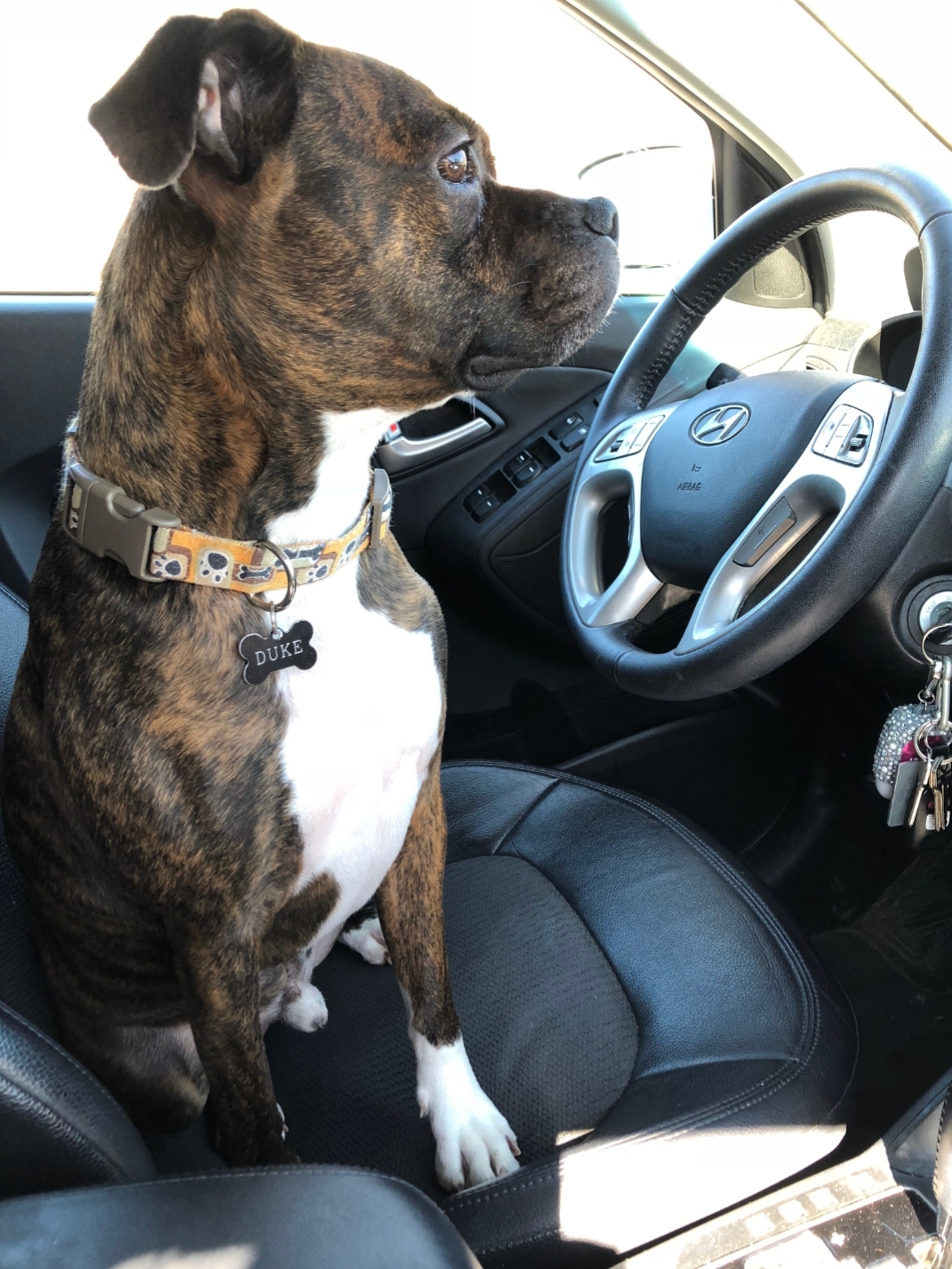
Spotlight on Safety: Car Rides
It is common to discuss pets riding safely in the car. The statistics and safety risks associated with pets riding loose in the car are numerous! Pets riding loose in vehicles can become a distraction to the driver and pose a safety risk. Pets involved in accidents can become projectiles, may pose a threat to first responders, and may bolt from the car and get hit by another vehicle. To further explore the subject we will look at types of restraint for pets available, their benefits, and training tips.
Seat Belt Harnesses and Pet Safety Seats
The best harness for car safety is a body harness specifically made for car travel. These harnesses have thicker material across the pet’s chest to spread the force of the crash across the dog’s body. Depending on the brand some harnesses have straps that thread through the seat belt or snap directly into the buckle. Others use the tether points of SUV. Pet safety seats are designed for small or toy breed dogs. They are secured by seat belts and some are raised to allow pets to see out the window.
Dogs that like to spin or pace in the car could get wrapped up in the straps. Transition the dog to riding in the harness or travel seat with a few trial runs. Begin by sitting in the back seat (away from air bags) with the dog and reward for calm behavior such as sitting or lying down. After a few trips you can sit in the passenger seat to offer rewards. As your dog becomes more successful you can try a few short solo trips. At stop lights toss your dog a reward for calm behavior.
Crates and Partitions
Crates are the industry standard for pet airline travel. Small crates for cats and toy breed dogs often have places to secure the crate using seat belts. Small crates can fall off a seat in the event of sudden braking. Large crates can be secured in the back by SUV tethers or fit snuggly behind seats. Partitions for large dogs in SUVs or hatchbacks are put up to keep the dogs in the trunk area. These will minimize distractions while driving, but not necessarily protect pets during an accident.
Most dogs will require little or no training when riding behind a partition or in a crate. Dogs with anxiety to the crate may need desensitization and counter conditioning sessions before being introduced to a carrier in a vehicle. Dogs in a crate can be taught to wait calmly at the door and released when you are ready.
Collars, Leashes, and People
This section can also be titled “How Not to Restrain Your Dog in the Car.” A dog on a collar with the end of the leash slipped with the seat belt threaded through is not safe. In the event of sudden braking, the dog’s momentum will be halted by the collar potentially causing neck injuries. Pets should not be restrained on owner’s laps. If a person is holding a dog in their lap and the air bag is deployed, the pet is between the person and airbag. The person doesn’t receive the full benefit of the airbag and the pet can be injured during deployment.
Final Thoughts
Safety restraints protect owners, pets, and first responders in event of an accident and minimize distractions while driving. They can also cut down on the stress of car rides. Instead of trying to stop your pet from engaging in bad habits, you can enjoy the drive knowing your pet is safe. A little bit of planning and rewards makes the transition to riding in safety restraints go smoothly.




